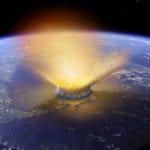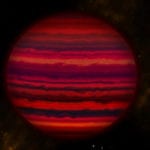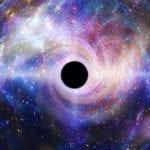 Food
Food  Food
Food  History
History 10 Odd Things Colonial Americans Kept at Home
 Weird Stuff
Weird Stuff 10 Superstitious Beliefs That Once Consumed Entire Cultures
 History
History 10 Bizarre Friendly Fire Incidents in Military History
 Technology
Technology 10 Modern Technologies That Accidentally Imitate Ancient Magic
 Mysteries
Mysteries 10 Mysteries of the Human Genome
 Weird Stuff
Weird Stuff 10 Things So Rare They’ve Only Been Found Once
 History
History 10 Legends Whose Last Moments Undid Their Glory
 Health
Health 10 Futuristic Ideas to Treat Common Medical Problems
 Weird Stuff
Weird Stuff Ten Surreal Attempts to Reverse Baldness
 Food
Food 10 Everyday Foods You Didn’t Know Were Invented by the U.S. Military
 History
History 10 Odd Things Colonial Americans Kept at Home
 Weird Stuff
Weird Stuff 10 Superstitious Beliefs That Once Consumed Entire Cultures
Who's Behind Listverse?

Jamie Frater
Head Editor
Jamie founded Listverse due to an insatiable desire to share fascinating, obscure, and bizarre facts. He has been a guest speaker on numerous national radio and television stations and is a five time published author.
More About Us History
History 10 Bizarre Friendly Fire Incidents in Military History
 Technology
Technology 10 Modern Technologies That Accidentally Imitate Ancient Magic
 Mysteries
Mysteries 10 Mysteries of the Human Genome
 Weird Stuff
Weird Stuff 10 Things So Rare They’ve Only Been Found Once
 History
History 10 Legends Whose Last Moments Undid Their Glory
 Health
Health 10 Futuristic Ideas to Treat Common Medical Problems
 Weird Stuff
Weird Stuff Ten Surreal Attempts to Reverse Baldness
10 Cosmic Misconceptions About Outer Space
Ever since humans first looked up at the night sky, they have been fascinated by the stars. This fascination has led to thousands of years of theories and discoveries about the nature of our solar system and the celestial bodies within it. However, like many subjects, knowledge that is misleading in nature or just flat-out inaccurate often spreads just as easily as the real thing. Considering that astronomy has been a very popular subject of both amateur and professional study since recorded history, it’s understandable that a certain number of misconceptions have become ingrained in the public consciousness.
10The Dark Side Of The Moon

Most people have heard of the Pink Floyd album “The Dark Side of the Moon,” and the idea of the Moon having a dark side is extremely popular. Except, of course, for the fact that the Moon doesn’t really have a dark side. It’s a common misconception, and it’s actually fairly easy to misunderstand. The issue is that we only ever see one side of the Moon because of the way it orbits us. However, even though we only see one side, we see that side in varying amounts of light and darkness, so it would make sense that the rest of the Moon would go through similar transitions.
A more accurate name would be the far side of the Moon—we don’t see it, but it’s not always dark. The reason for this is that the Moon does not get its light from the Earth—it gets it from the Sun. While the other side of the Moon is not seen by us because of its orbit, it is still being illuminated by the Sun. This cycle takes a lot longer than it does on Earth, though. A full lunar day is roughly two weeks on Earth. No one has landed on the side of the Moon that faces away from Earth, and no manned spaceflight has landed on the Moon during its night cycle.
9The Moon’s Effect On Tides
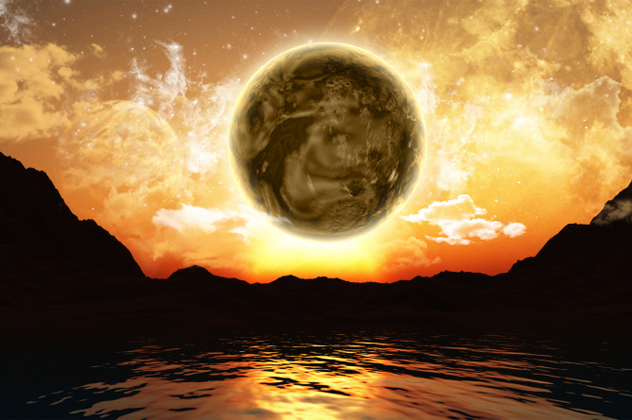
One of the most common misconceptions regarding space is how our oceans’ tides work. Most people understand that they are affected by the Moon, and this is largely true. But many people are also mistakenly under the impression that the Moon is the only force acting on them. Technically speaking, the tides are controlled by the gravitational pull of any nearby celestial bodies with enough size. While the Moon is indeed a very large mass and very close to us, it is not the only large object nearby. The Sun itself actually generates considerable tidal force upon the Earth. It affects the tides in tandem with the Moon’s effects, to a much greater degree when they are in alignment.
However, while the Sun does affect the tides considerably, it is true that the Moon has more influence on the tidal forces of the planet than the Sun does. This is because, despite the massive size difference, the Moon is so much closer. If the Moon were to be destroyed, the oceans wouldn’t suddenly go still, although the tides would likely change their patterns significantly.
8The Sun And Moon Are The Only Celestial Objects Visible During The Day

We all know that you can see the Sun during the day, and most people have seen the Moon during the day once or twice. This usually happens either early in the morning or when it’s getting late. However, most people think that this is the extent of the celestial objects that can be seen in the sky before nightfall, and due to the innate dangers of looking at the Sun, people tend not to stare up at the sky much during the day.
But Venus is actually incredibly close to Earth compared to other planets. Whenever you see an oddly bright star at night, it’s usually just Venus. And under the right conditions, you can get a view of Venus during the day. Phil Plait from Bad Astronomy has provided a guide to finding Venus during the day if you would like to try, but he strongly suggests being extremely careful not to look at the Sun when doing so.
7The Space Between Planets And Stars Is Empty
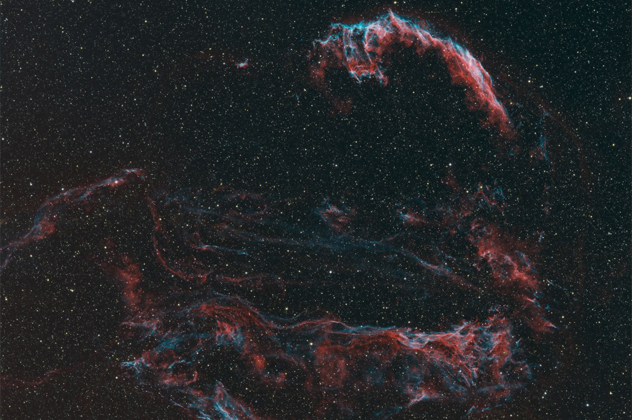
When we think of space, we tend to think of the vast, cold emptiness. This is unsurprising, considering that we call it “space.” While we know that new celestial objects are always forming, we still tend to think of the black stuff in between all of that as complete and total emptiness. For the longest time, this was believed by most astronomers, but research has shown that there is much more to the universe than meets the eye.
Not that many years ago, researchers discovered dark energy, which seems to be causing the universe to expand at an ever-increasing rate and which scientists believe could slowly cause the universe to tear apart over billions of years. This mysterious energy seems to be present in some quantity just about everywhere—it’s in the fabric of space itself. The physicists who study the phenomenon believe that there are still many pieces of the puzzle yet to discover, but we are quickly discovering that empty space is not nearly as empty as we once thought.
6We Have A Good Grasp Of What’s In Our Solar System
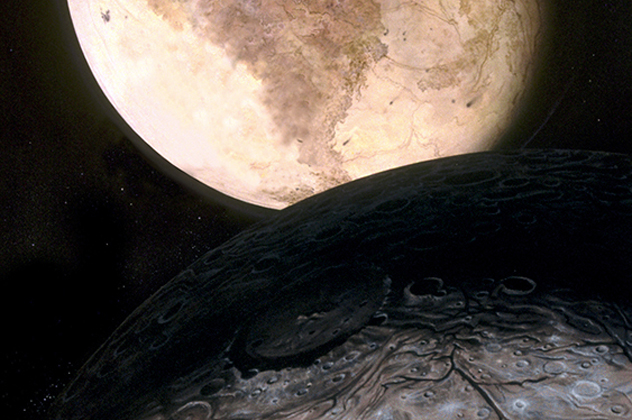
For the longest time, everyone was convinced that there were nine planets in our solar system, with Pluto being the last. As we know, Pluto’s planetary status was recently called into question. The reason for that is that astronomers started finding a lot of objects similar in size to Pluto in the asteroid belt behind the ex-ninth planet. This discovery quickly changed the perspective many astronomers had about the makeup of our solar system. Recently, some astronomers have written papers suggesting that the outer solar system may hold two or more objects even larger than Earth, some possibly with as much as 15 times the mass of Earth.
Their theories are based on calculations involving the various orbits in the solar system and how they affect each other, but as of this writing, there are no telescopes powerful enough to ascertain whether their theory is true or not. While the theory may or may not turn out to hold water, it’s clear that there is a lot more in the outer reaches of our solar system than we originally thought. As our space technology continues to improve and we create better telescopes, we may yet find many fascinating things in our own backyard.
5The Sun Is Getting Permanently Hotter
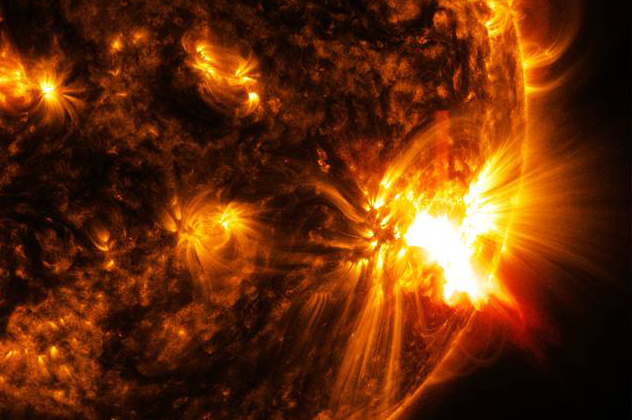
One of the favorite claims of weather and climate conspiracy types is that the Sun is getting exponentially hotter. They will tell you that the recent heat is not because of pollution or any kind of global climate change but is because the Sun is heating up. While this is sort of true, depending on what year it is, it is also extremely misleading. Scientists have been documenting the solar cycles since 1843, and they’ve found that the Sun is incredibly predictable. It has a cycle where it starts out with less sunspot activity, works its way up to more, and eventually goes back to a period of decreased sunspot activity, at which point the cycle begins anew.
According to NASA, this cycle lasts roughly 11 years, and scientists around the world have been watching this cycle perform as expected for well over 150 years now. While there are many things involving our climate and solar system that are still mysterious, we actually have a very good grasp of when the Sun is going to be particularly active. These periods of heating and cooling are known as the solar maximum and solar minimum. When the Sun is at its solar maximum, the solar system may grow slightly warmer, but it’s all part of the natural, 11-year cycle—not something that would permanently harm the climate.
4Asteroid Fields Are Dangerous Space Minefields
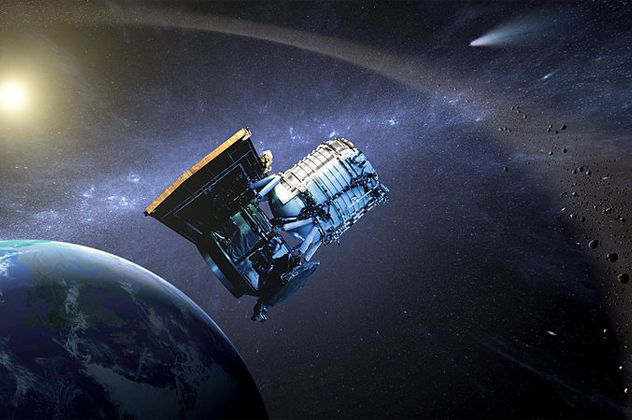
In the classic scene from Star Wars, Han Solo has no choice but to fly straight into an asteroid field in order to avoid pursuit from the Imperial forces. C-3PO gets incredibly flustered and prissily announces that their odds of successfully navigating the asteroid field are 3,720 to 1. This famous quote—along with the subsequent dangerous flight through the swarming field of asteroids—has cemented the popular idea that asteroid fields are veritable minefields of flying rock . . . and that’s entirely incorrect. While it certainly wouldn’t make for a very interesting movie, in real life, Han Solo would have had to maybe alter his ship’s trajectory every week or so to ensure he didn’t collide with anything.
The reason for this is that space is extremely huge, and the distances between objects in space tend to be equally vast. Our particular asteroid field is very spread out, and the Millennium Falcon, along with Darth Vader and his Star Destroyers, would have had no trouble making their way through. What the characters in Star Wars encountered was more akin to some kind of outer space calamity, such as a recent collision of two very large celestial bodies.
3Explosions In Space

There are two popular misconceptions about how explosions work in space. The first is the kind you see in sci-fi movies—a giant explosion when a spaceship blows up, often big enough to destroy other ships with the shock wave. On the other hand, some people will tell you that because there is no oxygen in the vacuum of space, explosions are categorically impossible.
The reality is somewhere in the middle. The latter misconception is predicated on the idea of setting fires in a literal vacuum, wherein you are in the vacuum of space and trying to flick a lighter on. That wouldn’t work, but if an explosion were to occur inside a spaceship, the oxygen inside could briefly mix with other gases and form the necessary chemical reactions for a fire. Depending on the gas concentrations, it could even be large enough to blow up a ship. But since there’s no pressure in space, the explosion would dissipate in a matter of milliseconds once it hit the vacuum. If you blinked, you’d miss it. There would also be no shock wave, which is the deadliest part of an explosion in the Earth’s atmosphere. On the other hand, a weapon designed to pierce through the enemy’s hull, such as a basic metal slug, could easily be extremely deadly.
2The Goldilocks Planets Are Just Like Earth
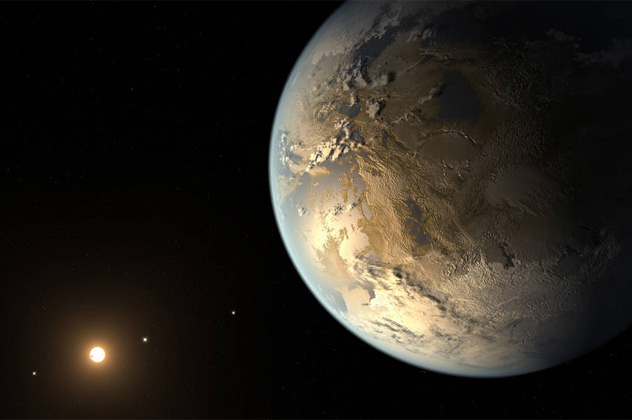
Some of the most exciting headlines that you see in science news these days are the breathless posts claiming that science has had a breakthrough and found another “Goldilocks planet” that could potentially support life. When people hear about planets like this, they think about how humanity could pack their bags and find greener pastures somewhere else. However, there are a few major problems with most of these discoveries. The biggest problem is that unless we invent an entirely new method of space travel, trying to get to any of these planets is about as realistic as performing magic rituals to summon eldritch horrors from another dimension. However, even if we could find a way to wormhole ourselves all the way across the cosmos, we would still run into some major issues.
That’s because Goldilocks planets are nothing more than estimations. We are looking at planets so far away that we can’t get any real objective measure of their atmosphere and temperature. We can only guess based on their distance relative to their star and their size in comparison to Earth—as well as a few other things that amount to calculated guessing. Also, it’s important to note that while new Goldilocks finds usually fill headlines, there have been several thousand potentials on the list, and at least 100 that are confirmed to be within the right zone for possible Earth-like life. Even the ones that have been confirmed are only potentially suited for life. As it stands now, nothing is for certain.
1You Are Totally Weightless In Orbit
People assume that being on a space station or spaceship means that you are totally weightless. However, this is a common misconception, because even space has something called microgravity. This minute version of gravity is the pull you feel between two objects while you are in space. For example, even though you are not on the Earth’s surface, there is still a gravitational pull coming from the Earth that is extremely strong. There would also be gravitational forces from the Sun and the Moon acting on you, just to name a few.
What this means is that even on a space station, you actually don’t weigh that much less than you would on Earth. The reason people float on a space station is because of the way the station orbits the Earth. Technically, the people onboard are actually in a form of constant free fall, and the way the station curves around the Earth during its orbit keeps them floating. This effect can be replicated with certain airplanes in our own atmosphere—a technique sometimes used to train astronauts.
